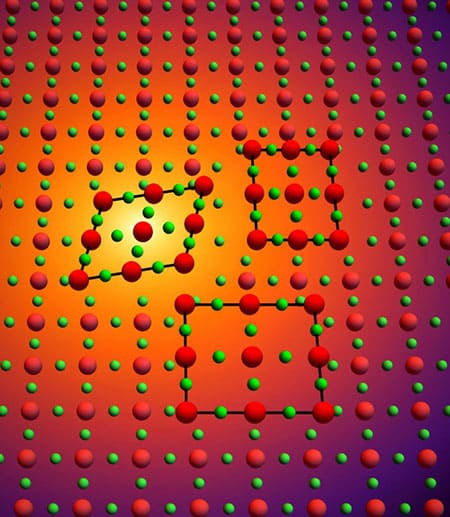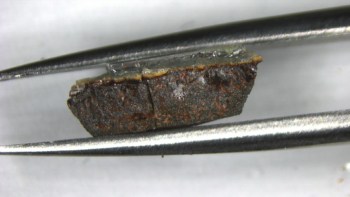
Superconducting materials are traditionally classed into two types: s-wave and d-wave. A third type, p-wave, has long been predicted. Now, however, researchers in the US, Germany and Japan say they may have discovered a fourth, unexpected type of superconductor: g-wave. The result, obtained thanks to high-precision resonant ultrasound spectroscopy measurements on strontium ruthenate, could shed fresh light on the Cooper pairing mechanisms in so-called unconventional superconductors.
In conventional superconductors, electrons join up to form Cooper pairs that then move through a material without any resistance. While all known superconducting materials need to be cooled to ultralow temperatures (or placed under extreme pressures) before their electrons start behaving in this way, if the process could be made to happen at higher temperatures, it would in principle allow for super-efficient power grids and circuit boards that don’t produce waste heat.
Superconducting order parameter
The Cooper pairing mechanism stems from interactions between electrons and phonons (vibrations of the material’s crystal lattice) and results in a “superconducting order parameter” that is said to have s-wave symmetry. In such s-wave superconductors, which include materials like lead, tin and mercury, the Cooper pairs comprise one electron with spin up and one electron with spin down. As these electrons move head-on towards each other, their net angular momentum is zero.
Unconventional superconductors, in contrast, exhibit d-wave superconductivity. Here, the electrons in the Cooper pairs have a positive angular momentum in one direction and a negative one in a second direction, so the total spin angular momentum for each pair is again zero. However, the pairs’ orbital angular momentum is nonzero..
A third type of superconductor, known as p-type, is predicted to exist between these s and d “singlet” states. p-type superconductors have one quanta of angular momentum and their electrons pair with parallel rather than antiparallel spins. Such “spin-triplet” materials are of interest because they could be used to create Majorana fermions – exotic particles that are their own antiparticles.
Measuring the speed of sound waves
For 25 years, the main candidate for p-wave superconductivity has been strontium ruthenate (Sr2RuO4). Several recent experiments have, however, cast doubt on this hypothesis. To investigate further, researchers led by Brad Ramshaw of Cornell University sent sound waves through a Sr2RuO4crystal as they cooled it through its superconducting temperature of 1.4 K. By measuring the response of the crystal’s elastic constants to the sound waves, they were able to determine how the speed of sound changes in response to shifts in temperature.
While this high-resolution resonant ultrasound spectroscopy technique has been used before, it had never previously been tried at such low temperatures – meaning that the researchers had to build a completely new instrument. “This is by far the highest-precision resonant ultrasound spectroscopy data ever taken at these low temperatures,” Ramshaw says.
A “two-component” superconductor
The data these experiments produced indicate that Sr2RuO4 is a “two-component” superconductor, which means that the way the electrons pair up cannot be described by a single number. Instead, the description must also include a value representing the direction in which electrons pair up. This behaviour is not consistent with p-wave superconductivity, and indeed previous studies using nuclear magnetic resonance (NMR) spectroscopy had likewise suggested that Sr2RuO4 is not a p-wave superconductor.

Superconductivity endures to 15 °C in high-pressure material
The Cornell researchers have now backed up these findings, but they also went a step further, showing that Sr2RuO4 is in fact something else entirely: a g-wave superconductor. This means that it has a completely different type of angular momentum from either s– or d-wave materials.
“Resonant ultrasound really lets you go in and even if you can’t identify all the microscopic details, you can make broad statements about which ones are ruled out,” Ramshaw explains. “So then the only things that the experiments are consistent with are these very, very weird things that nobody has ever seen before. One of which is g-wave, which means angular momentum 4.
“No-one has ever even thought that there would be a g-wave superconductor.”
Constructing a better theory
As a next step, the researchers say they plan to continue their search for p-wave superconductivity in other candidate materials. However, they will also continue studying Sr2RuO4. “This material is extremely well studied in a lot of different contexts, not just for its superconductivity,” Ramshaw says. “We understand what kind of metal it is, why it’s a metal, how it behaves when you change temperature, how it behaves when you change the magnetic field. So you should be able to construct a theory of why it becomes a superconductor better here than just about anywhere else.”
The team, which includes researchers from the Max Planck Institute for Chemical Physics of Solids in Germany, the National High Magnetic Field Laboratory at Florida State University and the National Institute for Materials Science in Tsukuba, Japan, report their work in Nature Physics.



